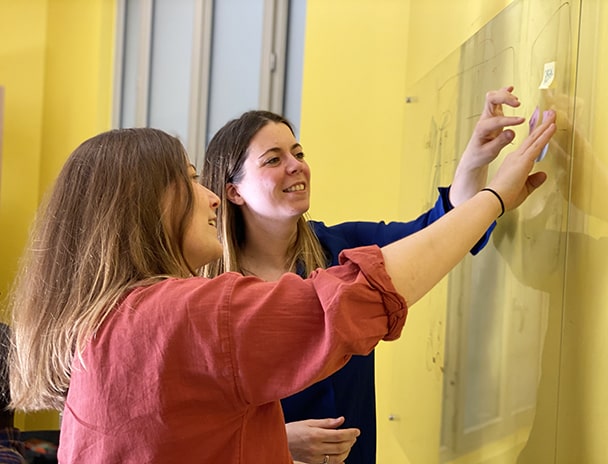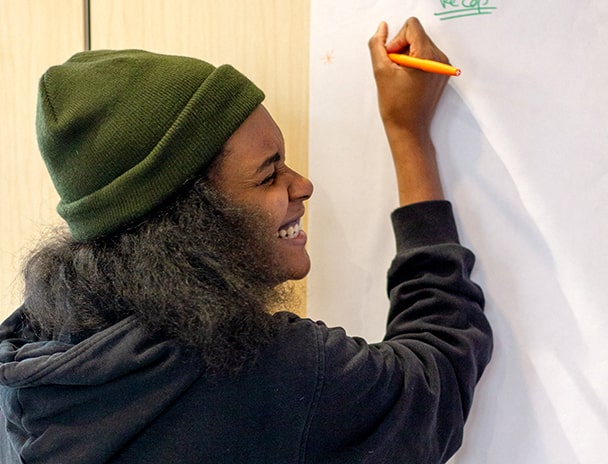Collaborating on Inclusion and Diversity with Students from the Equitable Design Lab
The Equitable Design Lab program is:
Develop high impact projects
Develop sustainability in existing markets and reach new markets.
A stronger connection
Create a deeper connection with your customers, users, and stakeholders.
Prospecting for talent
Attract and retain top UC Berkeley talent from diverse backgrounds.
A dedicated team of multidisciplinary UC Berkeley students spends a semester working together to design solutions to this challenge. Students gain training in applied innovation methodologies from a diversity, equity, and inclusion perspective.
Over the past 4 years, Schoolab’s San Francisco team has become a global leader in bringing together education, design thinking and societal issues, working with companies such as Atlassian, Samsung, and Whole Foods. Schoolab partners with UC Berkeley’s Haas School of Business on the Open Innovation for Inclusion and Diversity program: the Equitable Design Lab.
Examples and Consequences of Problems in Design Equity
Bias in the algorithms
Technologies directly limit usability and perpetuate underlying racism and discrimination.
Image recognition systems
The limited inclusion of computer vision technology increases racial disparities.
Learning at a distance
Remote learning perpetuates the disparities that people of color experience in access to education.
A Multidimensional Approach



Today's design is not equitable
Products and services are not as inclusive as they can be. Bias and prejudice result in Design that fails people of color, women, and people with disabilities.

There are underlying disparities in what we consume
While the vast majority are not actively racist or exclusionary, the lack of access and/or sense of belonging has massive consequences.

Leading to major consequences
The consequences of inequitable design are widening the gap between communities and individuals, despite many proactive policies in the country.

Equitable design is a systemic solution
We believe that one of the key ways to achieve racial equity is to rethink the products, services, and experiences that surround us and rid them of their subconscious biases.

